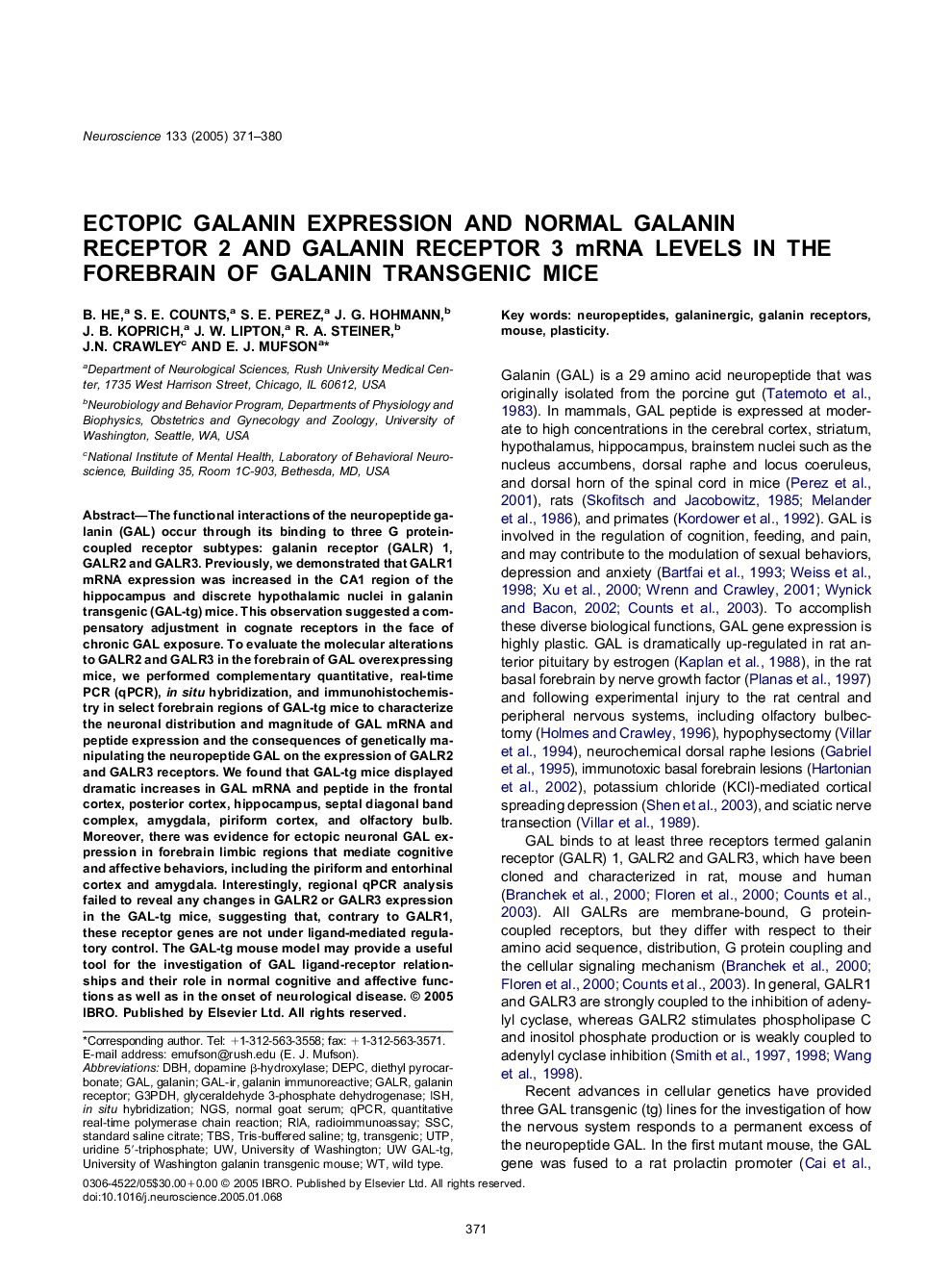| کد مقاله | کد نشریه | سال انتشار | مقاله انگلیسی | نسخه تمام متن |
|---|---|---|---|---|
| 9425403 | 1295869 | 2005 | 10 صفحه PDF | دانلود رایگان |
عنوان انگلیسی مقاله ISI
Ectopic galanin expression and normal galanin receptor 2 and galanin receptor 3 mRNA levels in the forebrain of galanin transgenic mice
دانلود مقاله + سفارش ترجمه
دانلود مقاله ISI انگلیسی
رایگان برای ایرانیان
کلمات کلیدی
qPCRG3PDHNGSDBHSSCTBSUTPISHDEPCRIAIn situ hybridization - Hybridization در محلuridine 5′-triphosphate - uridine 5'-triphosphatestandard saline citrate - استاندارد سدیم سیتراتTransgenic - تراریختهTris-buffered saline - تریس بافر شورUniversity of Washington - دانشگاه واشنگتنdopamine β-hydroxylase - دوپامین β-هیدروکسیلازdiethyl pyrocarbonate - دیورتیک پریکو کربناتradioimmunoassay - رادیوایمونواسیnormal goat serum - سرم طبیعی بزMouse - موشNeuropeptides - نوروپپتیدهاwild type - نوع وحشیquantitative real-time polymerase chain reaction - واکنش زنجیره ای پلیمراز کمی زمان واقعی استPlasticity - پلاستیکGalR - گالGal - گالGalanin - گالانینglyceraldehyde 3-phosphate dehydrogenase - گلیسرولیدید 3-فسفات دهیدروژنازGalanin receptors - گیرنده های گالانینgalanin receptor - گیرنده گالانین
موضوعات مرتبط
علوم زیستی و بیوفناوری
علم عصب شناسی
علوم اعصاب (عمومی)
پیش نمایش صفحه اول مقاله

چکیده انگلیسی
The functional interactions of the neuropeptide galanin (GAL) occur through its binding to three G protein-coupled receptor subtypes: galanin receptor (GALR) 1, GALR2 and GALR3. Previously, we demonstrated that GALR1 mRNA expression was increased in the CA1 region of the hippocampus and discrete hypothalamic nuclei in galanin transgenic (GAL-tg) mice. This observation suggested a compensatory adjustment in cognate receptors in the face of chronic GAL exposure. To evaluate the molecular alterations to GALR2 and GALR3 in the forebrain of GAL overexpressing mice, we performed complementary quantitative, real-time PCR (qPCR), in situ hybridization, and immunohistochemistry in select forebrain regions of GAL-tg mice to characterize the neuronal distribution and magnitude of GAL mRNA and peptide expression and the consequences of genetically manipulating the neuropeptide GAL on the expression of GALR2 and GALR3 receptors. We found that GAL-tg mice displayed dramatic increases in GAL mRNA and peptide in the frontal cortex, posterior cortex, hippocampus, septal diagonal band complex, amygdala, piriform cortex, and olfactory bulb. Moreover, there was evidence for ectopic neuronal GAL expression in forebrain limbic regions that mediate cognitive and affective behaviors, including the piriform and entorhinal cortex and amygdala. Interestingly, regional qPCR analysis failed to reveal any changes in GALR2 or GALR3 expression in the GAL-tg mice, suggesting that, contrary to GALR1, these receptor genes are not under ligand-mediated regulatory control. The GAL-tg mouse model may provide a useful tool for the investigation of GAL ligand-receptor relationships and their role in normal cognitive and affective functions as well as in the onset of neurological disease.
ناشر
Database: Elsevier - ScienceDirect (ساینس دایرکت)
Journal: Neuroscience - Volume 133, Issue 2, 2005, Pages 371-380
Journal: Neuroscience - Volume 133, Issue 2, 2005, Pages 371-380
نویسندگان
B. He, S.E. Counts, S.E. Perez, J.G. Hohmann, J.B. Koprich, J.W. Lipton, R.A. Steiner, J.N. Crawley, E.J. Mufson,